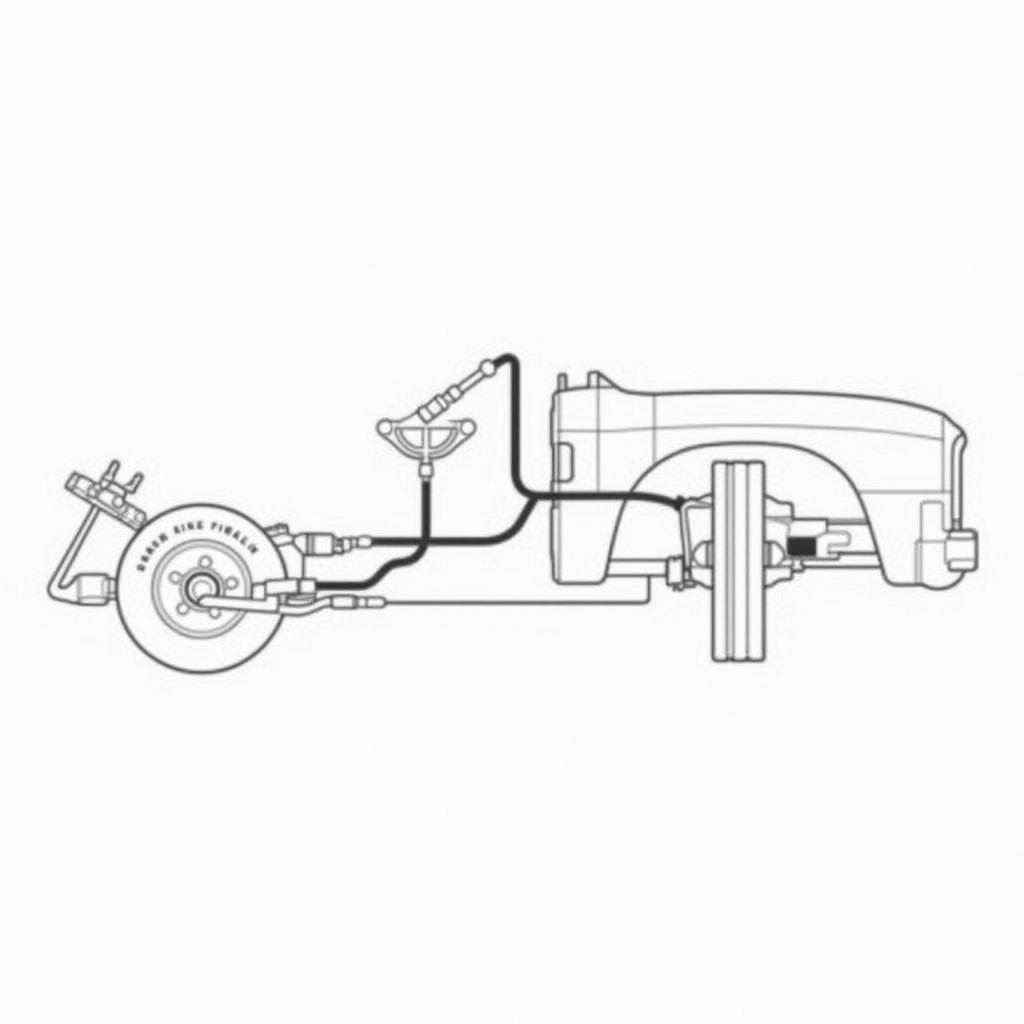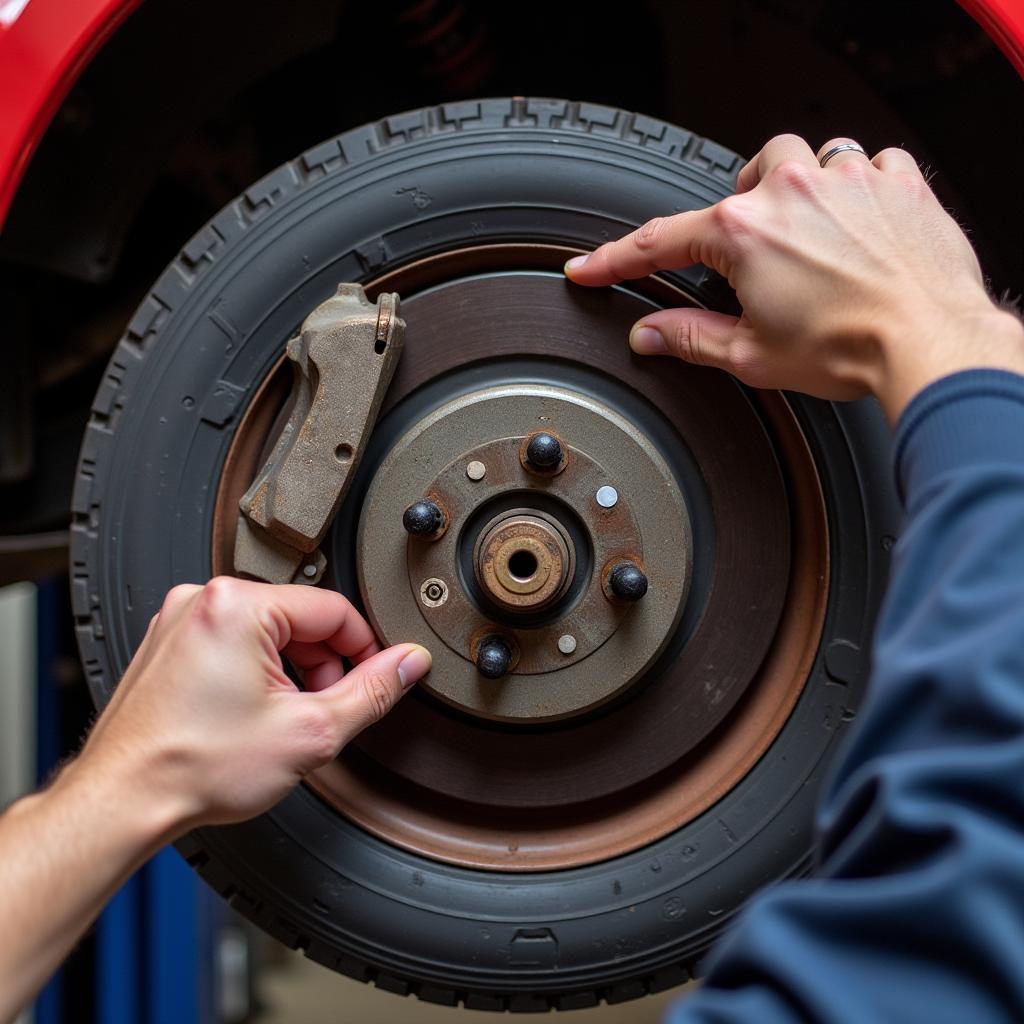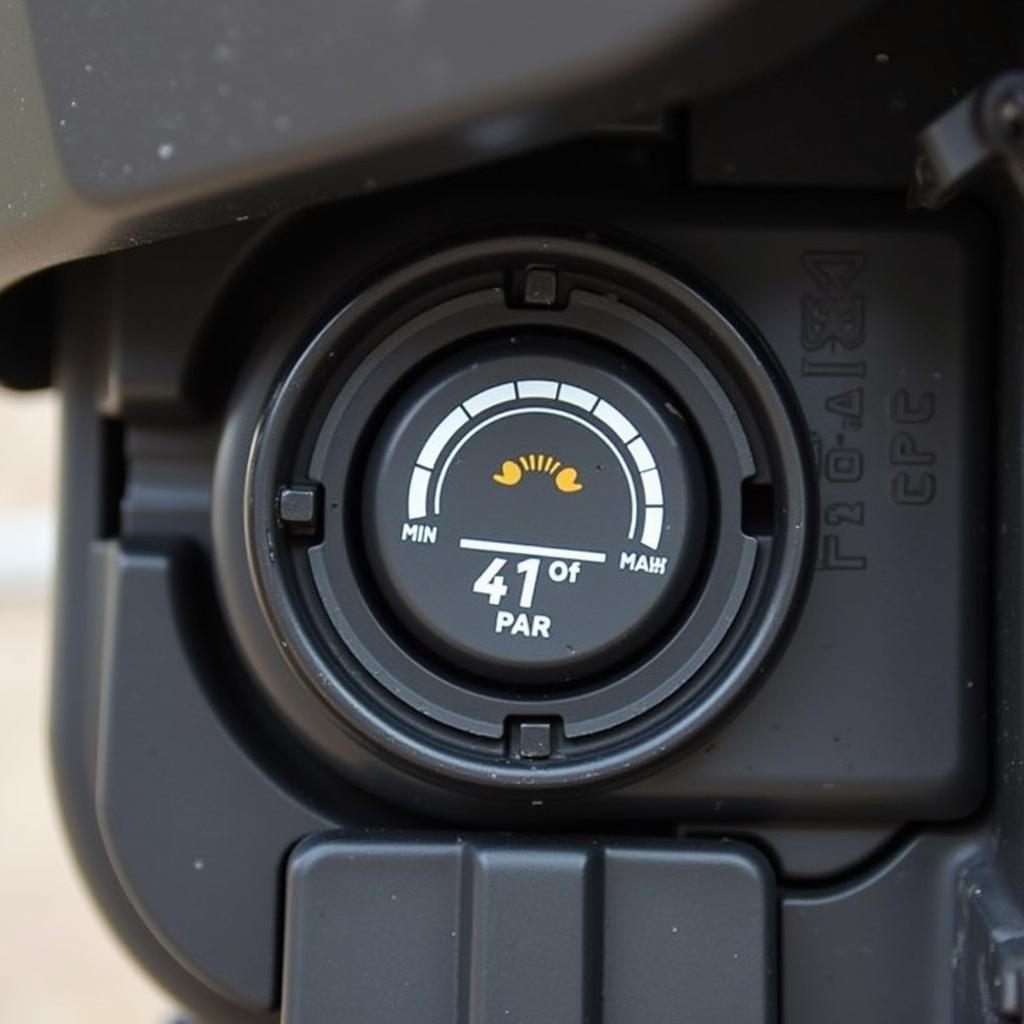The dreaded C10 brake warning light can be a source of anxiety for any driver. Whether you’re cruising in a classic or a more modern C10, this light signals a potential issue with your braking system that demands attention. This article provides comprehensive troubleshooting guidance and solutions for dealing with the C10 brake warning light. We’ll cover everything from simple checks to more complex diagnostic procedures, ensuring you’re equipped to handle this issue safely and effectively. Read on to learn how to address the C10 brake warning light and get back on the road with confidence. For issues related to a slightly different model, check out this resource on the 82 C10 brake fluid warning light.
Understanding the C10 Brake Warning Light
The brake warning light is a critical safety feature, illuminating to alert you to potential problems within the brake system. These can range from low brake fluid to more serious issues like worn brake pads, a faulty ABS system, or problems with the brake lines. Ignoring this warning can lead to reduced braking performance and potentially dangerous driving situations.
Common Causes of the C10 Brake Warning Light
Several factors can trigger the brake warning light in your C10. Understanding these common causes can help you narrow down the problem and find the right solution.
-
Low Brake Fluid: This is often the most common culprit. Brake fluid levels naturally decrease over time as your brake pads wear down.
-
Worn Brake Pads: Thin brake pads trigger the warning light as a safety measure. Replacing worn brake pads is crucial for maintaining optimal braking performance.
-
Faulty Brake Lines: Leaks or damage to the brake lines can cause a loss of hydraulic pressure, triggering the warning light.
-
ABS Issues: If your C10 is equipped with Anti-lock Brakes (ABS), a malfunctioning sensor or module can activate the warning light.
 C10 Brake System Components Diagram
C10 Brake System Components Diagram
- Parking Brake Engaged: Sometimes, the simplest solution is the right one. Ensure the parking brake is fully released.
Diagnosing the C10 Brake Warning Light
Diagnosing the cause of the C10 brake warning light involves a systematic approach. Here’s a step-by-step guide:
- Check the Parking Brake: Confirm the parking brake is fully disengaged.
- Inspect Brake Fluid Level: Locate the brake fluid reservoir and check the fluid level. If it’s low, add the appropriate brake fluid. Refer to your owner’s manual for the correct type.
- Inspect Brake Pads: Visually inspect the brake pads through the wheel spokes. If they appear thin or worn, they likely need replacing.
- Check for Leaks: Examine the brake lines and connections for any signs of leaks or damage. Look for wet spots or dripping fluid around the brake components. If you are experiencing issues related to the brake warning light, especially in an older model, have a look at our guide on the brake warning light 1985 Chevy C10.
 Mechanic Checking C10 Brake Pads
Mechanic Checking C10 Brake Pads
- Scan for Codes (if applicable): If your C10 has an onboard diagnostic system (OBD), use a code reader to check for any stored trouble codes related to the brakes. These codes can provide valuable insights into the issue.
When to Seek Professional Help
While some brake issues can be addressed with basic DIY skills, others require professional expertise. If you’re unsure about any aspect of brake repair, it’s best to consult a qualified mechanic. Brakes are a critical safety system, so don’t take any chances.
“Regular brake system inspections are essential for preventing major issues,” advises John Smith, a certified automotive technician with over 20 years of experience. “Early detection of potential problems can save you money and ensure your safety on the road.”
C10 Brake Warning Light: Remote Diagnostics and Solutions
Modern technology offers remote diagnostic and programming solutions that can effectively address specific brake system issues. Remote experts can analyze data from your vehicle’s onboard systems and even perform software updates to resolve certain problems without a physical visit to a repair shop. This can be particularly helpful for addressing ABS issues or other electronically controlled brake system components. For understanding potential warning signs related to your car’s brakes, see warning signs on a car brakes.
Conclusion
Addressing the C10 brake warning light promptly is crucial for safe and reliable driving. By following the diagnostic steps outlined in this article, you can identify the underlying cause and take appropriate action. Whether it’s a simple fix like adding brake fluid or a more complex issue requiring professional attention, understanding the potential problems and solutions will keep your C10 braking effectively and keep you safe on the road. Don’t ignore the C10 brake warning light – address it head-on to ensure optimal braking performance and avoid potential hazards. If you’re working on other vehicles, you might find this helpful: mini r56 brake warning light reset.
FAQ
- What is the most common reason for the C10 brake warning light to come on? Low brake fluid is often the most frequent cause.
- Can I drive my C10 with the brake warning light on? It’s not recommended. The light indicates a potential problem that could compromise your braking ability.
- How often should I check my brake fluid level? Check it at least once a month and before any long trips.
- How often should I replace my brake pads? Brake pad lifespan varies depending on driving habits and conditions. Consult your owner’s manual for recommended replacement intervals.
- What should I do if I see a leak in my brake lines? Do not drive the vehicle. Have it towed to a qualified mechanic for repair.
- Can a faulty ABS sensor cause the brake warning light to illuminate? Yes, a malfunctioning ABS sensor or module can trigger the warning light.
- What type of brake fluid should I use in my C10? Consult your owner’s manual for the recommended brake fluid type. Using the incorrect fluid can damage the brake system.

